In our previous post regarding Alaska, we traveled the Dalton Highway up into the Arctic Circle, a route that for the most part parallels the Trans Alaska Pipeline. The interesting thing to note about the Highway is that there could have been a railroad here too, and possibly instead of the Pipeline. After the discovery of oil in Prudhoe Bay in 1968, the problem was how exactly to get this oil out of such a remote location. Prudhoe Bay is in the far north of Alaska, and ocean access is hindered by ice – a fact that assured whichever method of transportation was chosen, it wouldn’t be easy. Besides the pipeline, highway tankers, submarines fortified to navigate the icy waters, air tankers, and the railroad were all possible solutions to the problem.
An Environmental Impact Statement from 1972 regarding the pipeline project details the two possible railroad routes that could have been. One proposed plan envisioned a Trans-Canada railroad, connecting Prudhoe Bay down through Alaska, and Canada’s Yukon to Whitefish, Montana. The massive project would require construction of 2,200 miles of double track to connect with already existing rail infrastructure in Montana. Carrying two million barrels a day would require operation of 37 trains per day. Trains would contain 80 to 110 tank cars, and likely be over a mile long (roughly 88 tank cars is a mile).
The other route, and likely the preferred route, was to extend the already existing Alaska Railroad to Prudhoe Bay. Diverging from the current railroad around Nenana, the new railroad would continue north to Prudhoe, requiring 580 miles of new track to be laid. The existing railroad infrastructure would also have to be updated in order to accommodate the heavy traffic. It was estimated that 1.26 million barrels a day could be transported over the single track line, requiring 21 trains a day in each direction. The total run from Prudhoe Bay to the port at Whittier would take 39 hours. Transporting the goal of two million barrels would require a double tracked railway, and operating more trains.
Unfortunately, neither railroad option was chosen, and the Trans Alaska Pipeline was constructed. The pipeline can transport just over 2 million barrels of oil per day, something that would have been difficult by train. Though certainly not impossible, transporting that much oil would require immense amount of equipment, and significant maintenance. The Alaska Railroad extension called for 9 hours a day to be devoted solely for maintenance, as even a small accident could have catastrophic effects (in hindsight, the pipeline proved to be just as dangerous – the Exxon Valdez oil spill could certainly be categorized as catastrophic. The Trans-Canada railroad plan would have eliminated the need for ships transporting oil). Even if the Alaska Railroad had been extended, it is likely it would have been used solely for freight, similar to the Alaska Railroad’s route that goes to the Eielson Air Force Base, or the mines near Healy.
But it is, of course, the passenger routes of the Alaska Railroad that we’re really here to see, and they look a bit like this:
As you see from the map, different trains are offered in the winter and the summer, and my trip included a trip on the Winter Aurora train. Running weekly in either direction, the train takes around twelve hours and travels from Anchorage to Fairbanks. Besides a baggage car and several passenger cars, the train contains a dining car that serves up hot meals. The first half of the journey I took passed through Wasilla and Talkeetna, and passes over the 558-foot long Hurricane Gulch arch bridge. The below photos are from the first half of the trip – we’ll continue the journey, and learn a bit more about the Alaska Railroad, in Part 2.


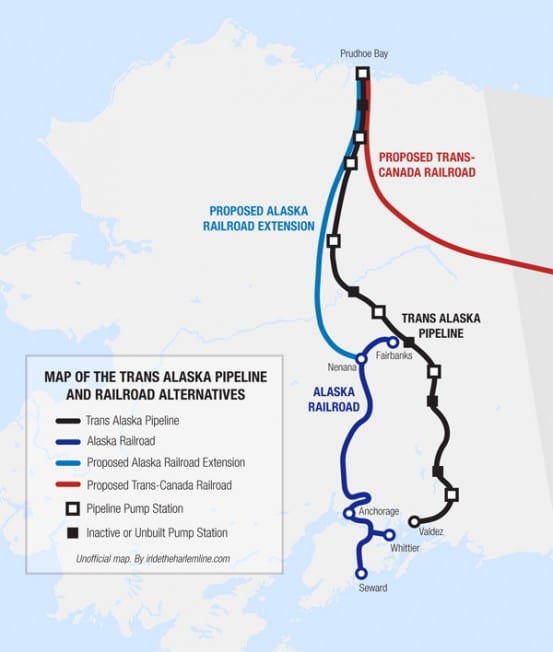
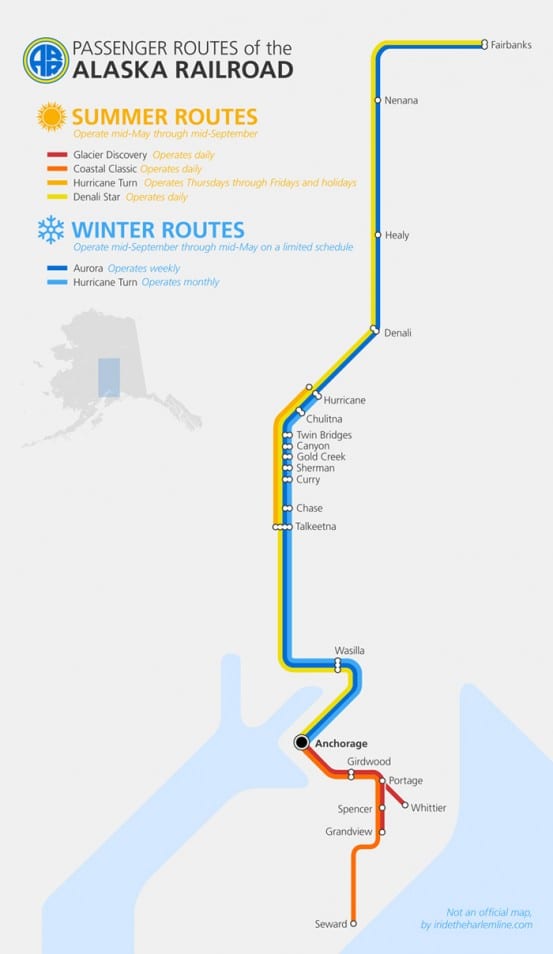
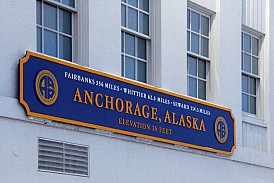
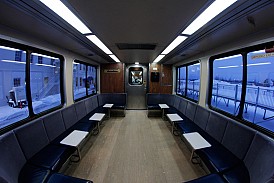
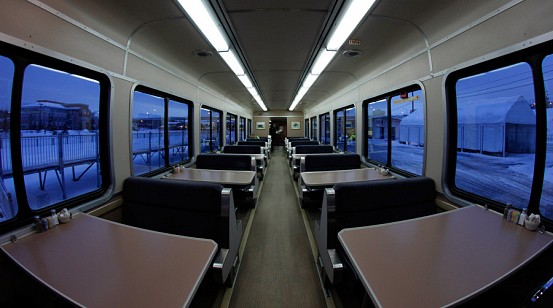
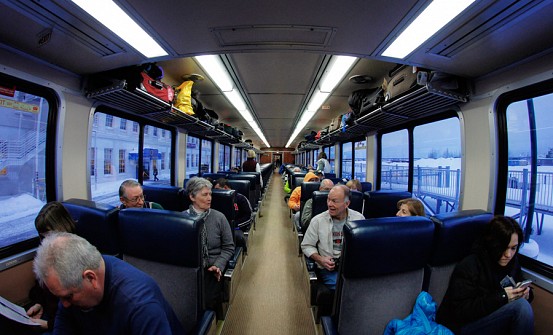
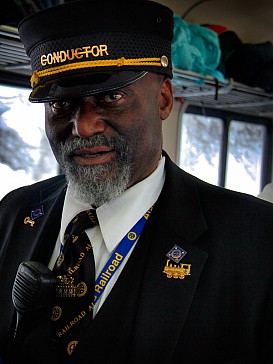
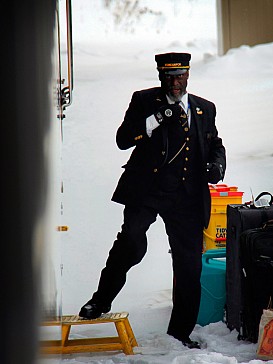
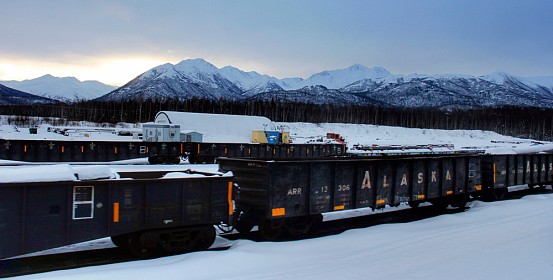
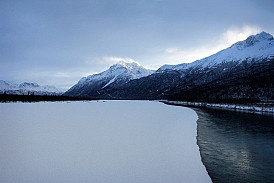
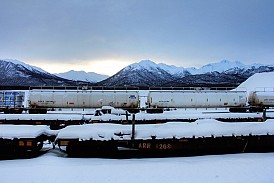
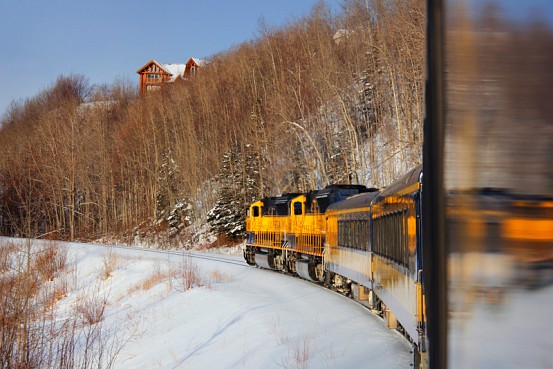
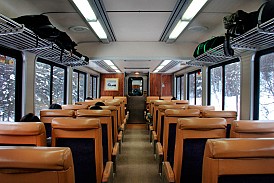
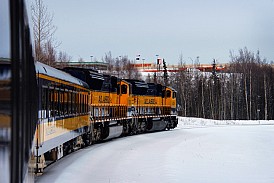
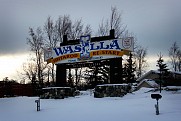
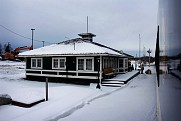
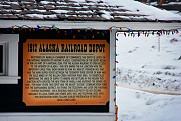
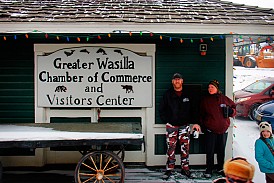
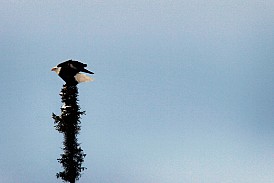
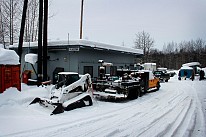
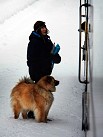
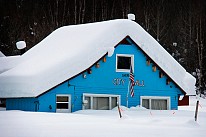
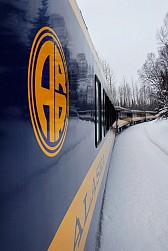
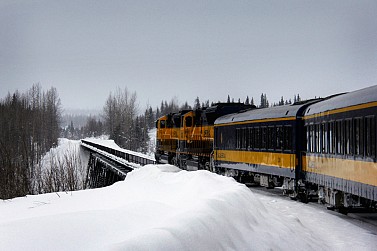
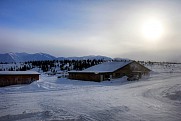
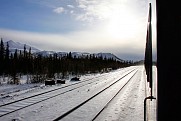
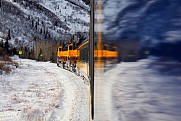
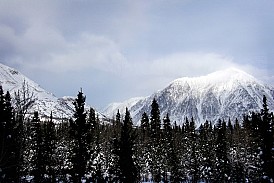
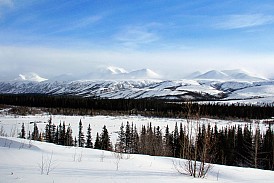
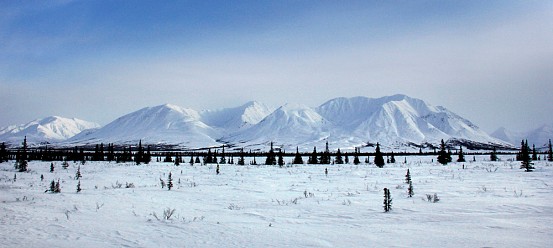
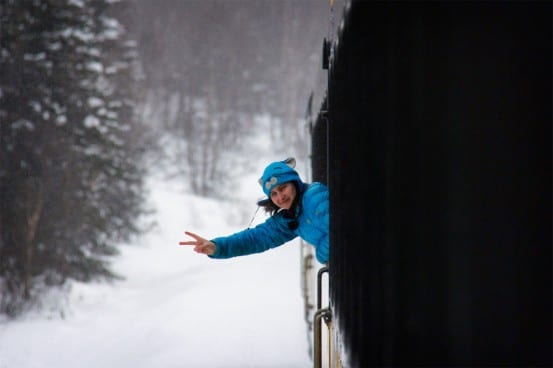
Absolutely stunning photos, Emily. I’ve always been fascinated by these trains that run through such isolated areas and the relationship they have with the local residents who depend on them. It looks like you got some decent weather and the light is pretty neat up there!
The aurora is on my bucket list. Wonder if I could convince my wife that she needs a train trip in Alaska — in the winter? Hmmmm
Actually, tell her that you’ll go to the hot springs… that might be enticing enough. Apparently going to the Chena Hot Springs (about an hour and fifteen minutes outside Fairbanks) is a popular winter trip, and a good handful of the people I met on the train were heading there. Super relaxing! For the five seconds it takes you to walk from the indoor pool area to the outdoor spring you wonder what the hell you are doing in a bathing suit in subzero temperatures, but after that it is quite glorious. The Alaska RR has packages that include Chena, but you usually can get a better deal on rooms there if you book yourself on their horrid website.
Wow Emily, your photos are awesome! I’ve always wanted to go to Alaska and see the Iditarod, ever since I raised my two Siberian Huskies form pups!
Wasilla, home of the Iditarod? Is it bad that I thought of someone/something else? ;)
Bwahahahaha no. Not possible for a tourist train to traverse Wasillia without making a comment about Sarah Palin.
Great photos, and I agree with you in wishing for those railroads that never were built. But I think that the Exxon Valdez disaster could have happened even if the Alaska Railroad, rather than the pipeline, had hauled the oil: via either method, the oil would have been transferred to a ship, right?
If the Alaska Railroad was extended, yeah, it would have been transferred to a ship (although at Whittier instead of Valdez), but the Trans-Canadian plan had the oil running down through Canada to Montana and connecting with Amtrak. THAT would have been a very interesting ride, IF it were available for passengers. Alas, no railroad :(
Hey kiddo, next time you are in Alaska, head down to Skagway and check out the White Pass & Yukon Route, a narrow gauge railway. While you are there, check out the GE 90 class “Shovelnose”, those are my favorite class of diesel.
I doubt Alaska Railroad will ever extend the tracks to the bay up north most of the terrain up there is not traversable since its almost wet most of them time. Canadian Pacific could do it but it would have to freight not passenger and even that trying to make the range traversable would be real costly to do so.